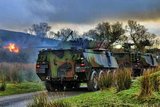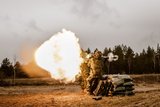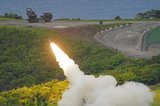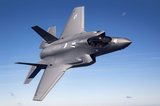US denies report it is leaving up to 1,000 troops in Syria
The US strongly denied a report that it intended to leave almost 1,000 troops in Syria, adding plans for a residual force of around 200 troops had not changed.
The Wall Street Journal had reported on 17 March that as talks with Turkey, US-backed Kurdish forces and European allies have failed to produce a deal on a ‘safe zone’ in north-eastern Syria, the US now intended to keep working with Kurdish fighters in the country.
It quoted US officials as saying the plan could see up to 1,000 US forces spread across the country.
‘A claim reported this evening by a major U.S. newspaper that the US military is developing plans to keep nearly 1,000 U.S. troops in Syria is factually incorrect,’ General Joseph Dunford, chairman of the Joint Chiefs of Staff, said in a statement. ‘There has been no change to the plan announced in February and we continue to implement the President's direction to draw down U.S. forces to a residual presence.’
But he added the US was continuing to ‘conduct detailed military planning with the Turkish General Staff to address Turkish security concerns along the Turkey-Syria border.’
‘Planning to date has been productive and we have an initial concept that will be refined in the coming days,’ he said. ‘We are also conducting planning with other members of the Coalition who have indicated an intent to support the transition phase of operations into Syria.’
President Donald Trump had abruptly announced in December 2018 the immediate and complete withdrawal of the 2,000 US troops deployed in north-eastern Syria, declaring victory against the Islamic State group. The decision prompted his defence secretary Jim Mattis to quit.
Then, under pressure from Congress and the Pentagon, he agreed to leave a residual force of some 200 US troops, which he wants to be reinforced by allies in the anti-IS coalition.
An objective of the international force is to guarantee the security of its Syrian Kurd allies. Turkey, a NATO member, views the Kurdish combatants as terrorists, and the Europeans fear they would be vulnerable if Ankara launched an offensive.
More from Defence Notes
-
![Taiwan approved for purchase of $11 billion in weapons from US]()
Taiwan approved for purchase of $11 billion in weapons from US
The US State Department’s approval of a multi-billion-dollar sale of weapons to Taiwan includes tactical mission networks equipment, uncrewed aerial systems, artillery rocket systems and self-propelled howitzers as well as anti-tank guided missiles.
-
![US National Security Strategy prioritises advanced military capabilities and national industry]()
US National Security Strategy prioritises advanced military capabilities and national industry
The 2025 NSS has emphasised investment in the US nuclear and air defence inventory and national industry, but it leaves multiple unanswered questions on how the White House will implement this approach.
-
![Canada set to look away from its neighbour and across the Atlantic for partners]()
Canada set to look away from its neighbour and across the Atlantic for partners
While non-EU UK struggles to join the Security Action for Europe initiative, which provides loans for defence programmes, Canada has become the first country outside Europe to get access – and did so for a nominal fee.
-
![NATO experiments with solutions to integrate networks, AI and uncrewed systems]()
NATO experiments with solutions to integrate networks, AI and uncrewed systems
During the latest edition of the NATO DiBaX, the alliance tested multiple capabilities to inform requirements for future efforts.
























